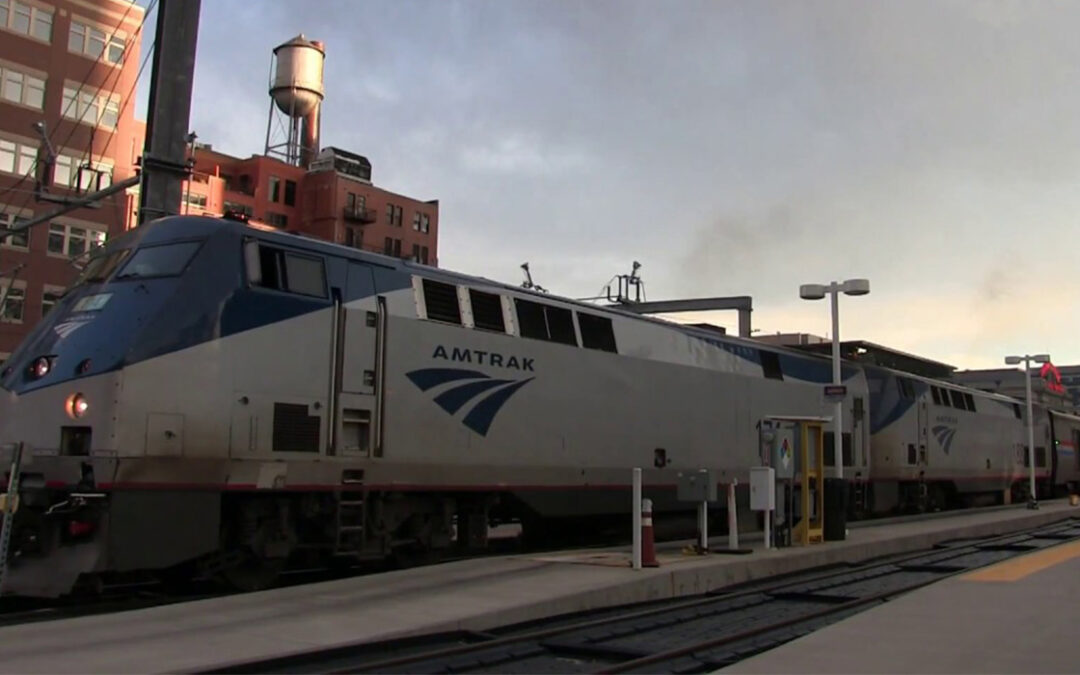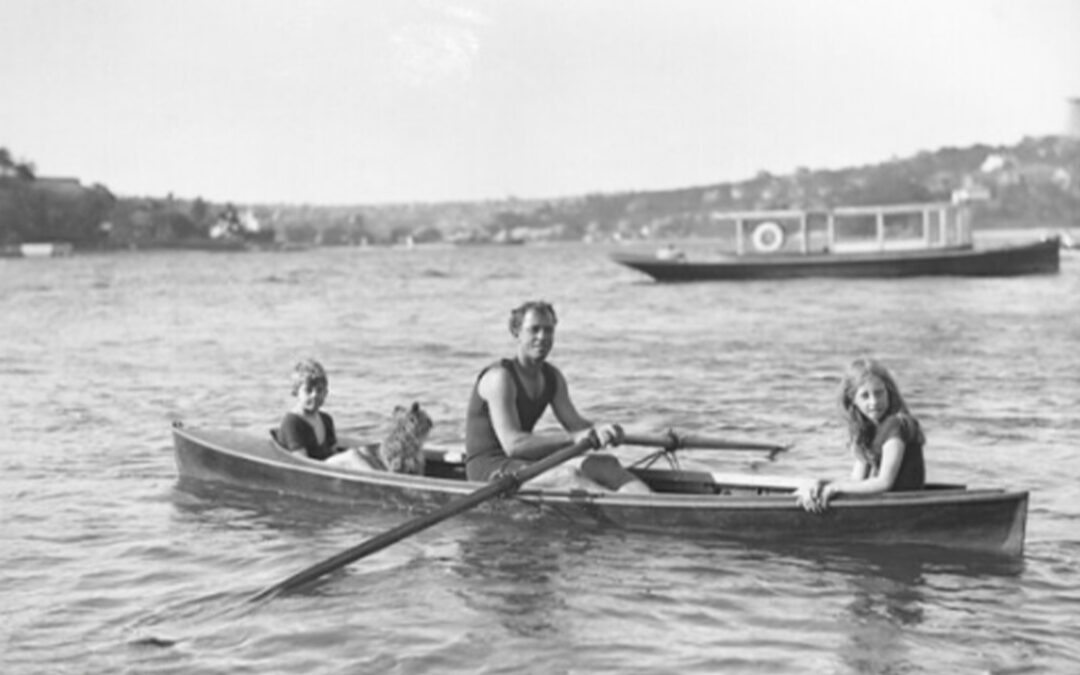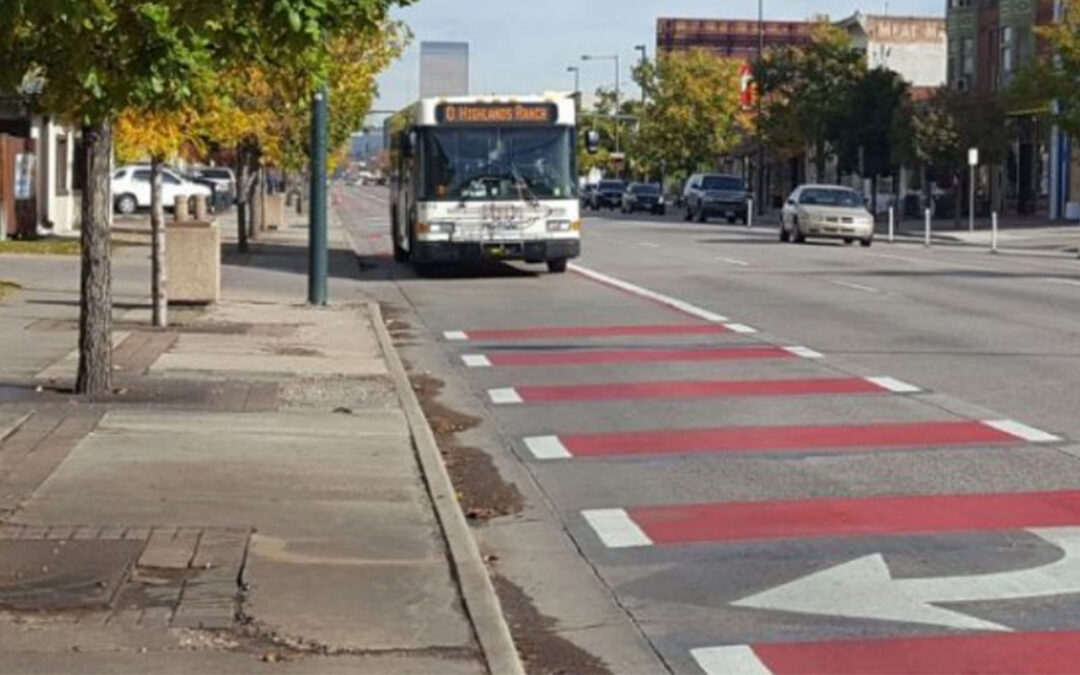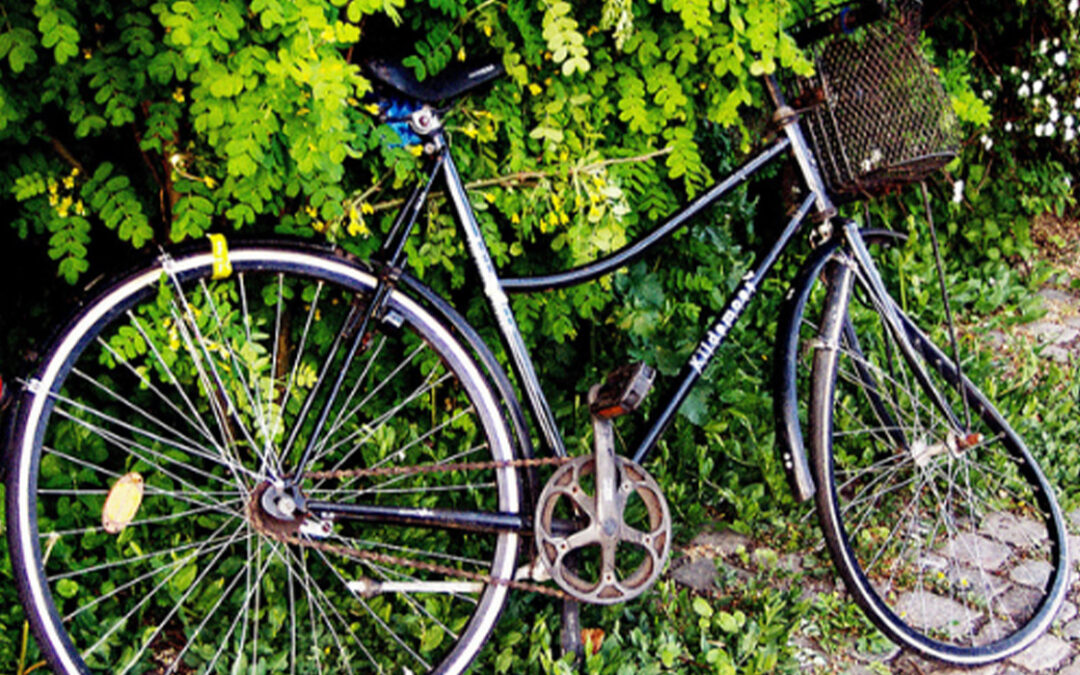
by Jennifer O'Connell | Jun 3, 2019 | Colorado
Amtrak: The Solution to All Your Front Range Needs
Colorado Springs, Castle Rock, Fort Collins, and other Front Range commuters: Your lives may be about to change… in a few years… perhaps…Colorado Department of Transportation has been contemplating — and is now studying — adding a passenger railway covering 173 miles of the Front Range corridor, according to the Denver Business Journal. The “study phase” means they are seeking proposals on the feasibility of adding passenger rail versus other multi-modal options to relieve the bottlenecks and clogs of Interstate 25. Included in the existing options are additions to the existing Amtrak line. That line currently has stations in Trinidad, La Junta, and Lama, and this option would expand that passenger service for the full 173 miles. The full layout would then include stations in Colorado Springs and Denver.
Another option being considered, outside of passenger rails, is the expansion of I-25 between Fort Collins and Mead and a widening of the near-bottleneck between Castle Rock and north-El Paso County. The same group, the Passenger Rail Commission, has also identified a passenger rail along the congested mountainous segment of Interstate 70 — the portion leading to the gateways for hiking and skiing — as a solution for the days of disappointment in the winter… hours of sitting in traffic to spend half that actually skiing. However, both the I-25 and I-70 passenger rail congestion remedies have been moving slower than a horse and buggy. CDOT maintains that the reason for the lack of horsepower behind these projects is a lack of funding. Two measures, a sales tax hike and bond sale proposal, were proposed on last year’s ballots and were rejected by voters. Yet both measures were earmarked to fund these projects.
At present, while CDOT estimates that there is a need for infrastructure improvement with a price tag of $9 billion state-wide, only $2.9 is available in the budget. So which should come first? Interstate improvements, passenger rail services to relieve interstate burden, or alternate routes altogether? With less than a third of the budget available, where does CDOT put the funds? CDOT has not reached out to the voters for their thoughts, as they feel the answer comes when voters reject ballot efforts for funding. Perhaps, though, CDOT should ensure the ballot measures connect the two — bonds sales and increased sales tax in exchange for less time on the road staring at another person’s bumper. Or perhaps a state-wide vote on whether commuters appreciate the projects, or where they would prefer CDOT target?
In the meantime, let us know your thoughts. We’ll compile them and forward to the powers that be. What are your primary considerations? Are they missing something you’d like considered? What’s your number one priority with the congestion of I-25 and I70? Or are there a bigger fish to fry?

by Jennifer O'Connell | Apr 19, 2019 | Colorado
The Never-Changing Caps
No one likes to think about the worst. But in our role as officers of the court, we are tasked with doing just that. All too often, we represent the families of people who have passed due to the negligence of another: families of injured children or working parents who will have years of recovery ahead of them due to someone else’s negligent actions. And we continue to push back against the caps put into place by the state legislature on what those families are allowed to collect. Often when the worst happens, the settlement or judgment against the party at fault serves as a life insurance policy from the decedent to their loved ones. This is because many do not have life insurance coverage at all, or if they do, it amounts to $100,000 or less. But when the family is left with numerous medical bills, estate costs, funeral expenses, house payments, and loss of dual income that helped support the household, $100,000 does not go very far, if it covers the necessities at all.
The state legislature in Colorado saw fit to limit the amount these grieving families could be compensated through legal means from the at-fault party. Years ago, the cap on damages was limited to $468,010 in non-economic damages for a wrongful death claim. That means that after the direct medical bills related to the death are paid, families may receive a maximum of $468,010 to help them cover the costs and expenses above. Period. For life. There is no going back and asking for more. There is no fund from which to draw if times get tough and there is nothing left. What if the family of the deceased has no one else to work and support the household? What if the deceased was a single mother or father of several children who have no one else to support them? And after the payment of all death, funeral, medical, and household costs, little is left to support these children through to adulthood, to keep up with house payments or school needs and college funds? Should these children be disallowed to seek their education as planned because someone else negligently caused the death of their parent? Should they become wards of the state? Should they go to another family member who is already living paycheck to paycheck with very little to ease the burden? Further, this amount has not changed in many years, meaning it has not kept up with inflation.
Finally, and thankfully, the state government has paid attention to the cries of the victims of negligent acts. Governor Polis signed into law a new bill that not only raises the various caps by approximately $20,000 each, keeping in line with inflation. In addition, instead of the old ways of checking in over a decade later to ensure the caps are keeping up, the caps will be proverbially babysat every two years. Problem solved? Not really. From our perspective of working with these families day in and day out, the inflation bump helps, but when you are faced with the prospect of having very little to support your family with the loss of your spouse, or being paralyzed and requiring medical treatment and an inability to work and provide for your family, a mere few hundred thousand from the party that put you in that position hardly seems adequate. Even if a jury awards a plaintiff millions of dollars in non-economic damages, all they will see is the exact amount of the cap.
For reference, here is where they stand and where they will be once this law goes into effect:
- Current non-economic damages cap — $468,010 Anticipated new cap adjusted for inflation $584,210
- Current dram shop/social host cap — $280,810 Anticipated new cap adjusted for inflation $350,550
- Current wrongful death cap — $468,010 Anticipated new cap adjusted for inflation $584,210
- Current solatium cap — $87,210 Anticipated new cap adjusted for inflation $108,840
While there are legal means to, as we say in the biz, “bust the cap,” this is not an easy concept and there are extremely limited and narrow exceptions that must be followed so precisely that many fail to qualify. We wholeheartedly understand the community’s desire for some control over liability and to keep a handle on litigation results. However, we must put closer consideration to the lives that are left behind when horror strikes. No amount of money will replace a loved one or give a human being back their dignity and use of their limbs. But adequate compensation to get them through the next years of their life, help keep a roof over their home, food in their kid’s bellies, and heat running through the ducts while they try to get back on their feet… that we can do. If you find yourself sitting on a jury evaluating the damages for a catastrophic injury, please keep in mind these things we have discussed today. And do not limit your verdict to these caps. If you see fit to award the plaintiff more than that legislatures meager attempts at adequate compensation, write it down on that line.
Allow the team fighting for the injured some leeway to petition for a cap bust. And next time you send a letter or make a phone call to your representatives, remember to ask them exactly where these numbers came from and why they feel that politicians know more than the jury, who has sat through perhaps weeks of documentation of this person’s future life and needs, about the value of that. Do not let elected officials usurp the power of a jury, one of the oldest and most important civic duties in our country’s history. Finally, if you or a loved one find yourself in a time of loss or catastrophic injury, please call an attorney right away. Do not try to navigate these complexities on your own. You need to focus on the next steps for your family while we focus on taking on the negligent party and the legislature’s regulations simultaneously so we can get you set as close to right as possible when the dust settled. We are happy to answer any questions free of charge to get you moving in the right direction. Come read about what we have been able to do so far and call or email us to see how we can help you in the future.

by Jennifer O'Connell | Mar 29, 2019 | Colorado
Live, Work, or Walk on Broadway? Speak Now!
City and County of Denver is busy at work trying to increase access to Downtown businesses and residences. This time, they want to know about the Broadway/Lincoln corridor. If you work, live, walk, or bike along the corridor, or have ever sat through one light cycle just to get to the intersection in time for the next red, take this survey to make your recommendations. For other surveys and articles about your area, click here. And to ask us questions, give us more feedback to take back to the city, or for help with your or your friends or family’s unfortunate injuries, click here and let us help.

by Jennifer O'Connell | Mar 20, 2019 | Colorado
How Will They Tackle Denver’s Growth?
Denver is growing. This we know. But did you know that the city population is projected to hit 849,000 by 2040? That’s an increase of over 150,000.
We hear the collective groans from the natives and the worries of the morning and afternoon commuters. So do city officials. With an eye to growth, city planners are focused on the following questions:
- How do we ensure adequate affordable housing and minimize displacement?
- How vehicle-centric should our city be?
- How do we ensure equitable access to high-quality parks and recreational programming?
- How do we maximize mobility for all?
Denver City officials have spent the last several years developing strategies to address development of better transit routes, more pedestrian-friendly roads, and multi-modal-supportive travel plans. The result is five distinct measures to tackled all of the above. Each measure it outlined below. Click on the plan title for the full plan details and costs from the Denver City Government.
1. Comprehensive Plan 2040
- 20-year vision of Future Denver
- Aims to address climate action, inclusive housing, multi-modal transport, and connective accessibility.
- 50+ goals for what Denver will look like in 2040
- Housing: access to basic services for all Denver residents, across a range of income levels; development of affordable housing for the lower socio-economic demographics; preserve existing affordable housing; reduce involuntary displacement of residents and businesses; improve education and increase educational equity.
- Neighborhood Development: increase quality neighborhood urban design; preserve authenticity of neighborhood history, architecture, and culture; create and preserve parks and public spaces; empower residents into city government activity and leadership positions; support the arts; conduct neighborhood planning; increase safety.
- Connections: expend the multi-modal transit systems; increase safety on public transit; increase public right-of-ways; increase multi-modal access in vulnerable areas; develop high-quality transit network; build and maintain bicycle and pedestrian networks; expand funding for multi-modal infrastructure; close the loop on transit connections.
- Economics: improve access to opportunity; emphasize diversity in economics; support local business; ensure a competitive workforce; strengthen Denver as a global city; increase youth access to education and the global economy; enhance economic vitality of the arts; stimulate innovation; promote food business.
- Environment: mitigate climate impact and reduce emissions; prepare for and adapt to climate change; conserve water and use efficiently; integrate storm-water; enhance and protect South Platte River; protect and expand green infrastructure; reduce and conserve waste; protect and improve air quality; promote responsible food systems; cultivate emergency planning.
- Health: enhance environments that support physical activity and health; provide more parks and recreation areas; ensure affordable nutrition to all neighborhoods; increase health services; incorporate health analysis into city policies.
2. Blueprint Denver
- Land use and transportation plan for growing city.
- Focuses on inclusiveness and maintenance of neighborhood identity within the city.
- Aims to reduce vulnerability through displacement as development increases.
- Increases access to quality-of-life amenities, health, and education within each neighborhood.
- Provides a better and more inclusive range of housing and employment options in all neighborhoods.
- Make all neighborhoods “complete,” in the sense that all include jobs, home, schools, health, and leisure activities.
3. Game Plan for a Healthy City
- Designed to address growth, limited water resources, and climate change.
- Promotes easy access to parks and open spaces, establishes more city parks and recreational programs.
- Increase resilience and environmental sustainability of city parks.
- Ensure equal distribution of parks and recreational programs to all neighborhoods.
- Manage economic resources to ensure long-term health of parks and recreation systems.
- Preserve neighborhood culture within the parks.
4. Denver Moves: Transit
- Provides more reliable and safe mobility options as the city grows.
- Offers more connectivity to key destinations and between neighborhoods.
- Includes plans for the first-ever citywide transit plan.
- Recognition that 1 in 4 residents in 2040 will be between the ages of 18 and 34, focusing transportation modes for the needs of this demographic.
- Reduce single-occupant vehicle commuters and increase bicycle and pedestrian commutes.
- Protects the climate and reduces greenhouse gas emissions.
- Eliminates barriers and increases access to smart technology and related mobility services.
5. Denver Moves: Pedestrians & Trails
- City-wide plan for completing and improving sidewalks, street crossings, and trails.
- Improves connections near transit.
- Increase wheelchair accessibility and safety.
- Enhance recreational train network, including adding multi-use and single-track trails.
- Make 4-foot sidewalks the city minimum and enhance accessibility to grocery, parks, schools, healthcare centers, and public transit.
- Increase “Tree lawns” between the sidewalk and curb/gutter space.
- Add pedestrian overpasses.
- Improvement of street signals, lighting, and furniture.
- Integrate neighborhood culture into street design.
- These plans were constructed from data review and public input, and they are still in draft format.
Click here for a calendar of public hearings where you can voice your concerns and ideas for the parts of these plans that mean the most to you. Queener Law plans to attend several upcoming community town-halls and public hearings to learn more about these projects. If you have concerns you would like us to voice, contact us

by Jennifer O'Connell | Mar 18, 2019 | Bicycle Accident, Colorado
More than a Ticket — Colorado Protects Its Vulnerable Riders
You’re at the end of a long day, just a few miles from your home, your couch, and your family, and a driver veers into the bike lane, cell phone in hand, and now your favorite specialized bike is laying on the shoulder, wheels in a position that could make a Cirque performer cringe. But that’s not even the biggest problem. Your son has practice tomorrow, but you’re not going to be able to coach the team. You are on your way to urgent care with what you have a sneaking suspicion is a sprained ankle and what you hope is not a torn rotator cuff. The road rash is just a secondary issue you’ll deal with in the shower.
Now, on top of missing work for the next two weeks and sitting out of sports practice, you have to hunt down the incident report, field calls from insurance companies, try to find a replacement for your old-faithful ride — all while juggling doctor’s appointments and physical therapy. And what happens to that cell-toting multi-tasker who got this joyous ball rolling? Their insurance covers the repair bill for the scratches to their paint, they pay their deductible, and they maybe, just maybe, mail a small check into the city for a traffic ticket for carelessness. But in the state of Colorado, that may be about to change!
Senate Bill 19–175, proposed this session in the state legislature, could officially criminalize carelessness that results in serious bodily injury.
If the bill passes, it will become Colorado Revised Statute 42–4–1402.5, which will make it a class 1 traffic misdemeanor to cause “serious bodily injury” to a “vulnerable road user” while engaged in “careless driving.” Sounds like a lot of quid pro quo, so let’s break it down:
Careless Driving: CRS § 42–4–1402 defines careless driving as operating a motor vehicle “in a careless and imprudent manner, without due regard for the width, grade, curves, corners, traffic, and use of the streets and highways, and all other attendant circumstances.” A solid “kitchen sink” technique of defining a legal standard. But authorities have used “careless driving” to encompass things like speed, failure to obey the Move Over laws, cell phone usage, and other general methods of distracted driving.
Vulnerable Road Use: Now this part is clearly articulated in a lengthy — sometimes oddity encompassing — recitation contained within the bill itself. It includes:
- Pedestrians
- Workers on the roadway or on utilities along the roadway
- Emergency services using a right-of-way
- Peace officers outside their vehicle or in a right-of-way capacity
- Persons leading an animal or riding an animal
- Cyclists, tricycle riders, and assisted bicycle occupants
- Farm vehicle users
- Skateboarders
- Roller skaters
- Scooter riders
- Moped and motorcyclists
- Animal-drawn vehicles
- Sleds
- Electric personal assistive mobility devices
- Wheelchairs
- Baby strollers, and Non-motorized pull wagons
Serious Bodily Injury: Section 18–1–901 of the Colorado Revised Statues defines “serious bodily injury” as an injury in which “either at the time of the actual injury or at a later time, involved a substantial risk of death, a substantial risk of serious permanent disfigurement, a substantial risk of protracted loss or impairment of the function of any part or organ of the body, or breaks, fractures, or burns of the second or third degree.” Yet another conglomeration that legislatures are so good at constructing. For as long as Colorado has been a state, arguments have occurred over what degree of injury is required to be deemed “serious.” Breaks and fractures are clearly defined, but what about a major sprain, a torn ligament, a concussion or a back injury? All of these fit within the parameters of an injury that could cause a protracted loss or impairment of function, and it is out position that if you are a vulnerable road user who is stuck with any of these types of wounds, you will have zero doubt as to your qualification for “serious bodily injury.”
So now what? What happens to the culprit? Under the new bill, CRS § 42–4–1402.5 would allow police to investigate and charge careless drivers with a Class 1 Traffic Misdemeanor open to the following penalties:
- Attend a Driver Improvement Course
- Community Service of up to 320 hours
- Restitution to the Injured Party
- One-year suspension of Driver’s License
These are much stiffer penalties than the previous fines associated with careless driving citations. Because this is a truly criminal offense, and because we all have the right to be protected against unreasonable and unlawful punishments, everyone charged under this section will have the right to defend themselves. True accidental collisions will not apply to this new proposed statue.
Co-sponsor of the bill, Representative Dylan Roberts, told the Meghan Lopez of The Denver Channel that “[y]ou have to be found guilty of careless driving, so if it’s truly an accident, you’re not going to be liable under this bill.”
The legislature appears to have made it a priority to protect malicious or overuse of this statute, while balancing the importance of protecting the outlined vulnerable road populations. Just last week, an officer and a utility worker were killed in road accidents. Several motorcyclists were either injured or lost their lives. And no need for exaggeration here: cyclists and pedestrians are struck at a seriously alarming rate. In a state like ours where people are especially conscious of more environmentally friendly and healthy modes of transportation, not to mention mobility methods that allow us to enjoy the world-class weather, keeping an eye to safety protections is especially vital.
As this bill makes its way through the legislature, feel free to contact us with questions or in a search for more information about how this statute could affect your commute and safety.

by Jennifer O'Connell | Mar 11, 2019 | Colorado, Personal Injury
Urban Avalanches: Colorado Passed Milestones
The clouds are rolling in and more of the powdery white stuff is on the way… snow, that is. This week may bring another 6” of snow to Denver, and this week’s storms are also bringing high winds of over 40 mph. Wind gusts are more dangerous to your commute than you might think. While no one loves driving in windy conditions that whip their car around, especially when passing a large truck or bus. Wind also sweeps snow onto the roadways, cooling and patting it down, creating icier conditions than snow alone. But the bigger issue in the news lately has been avalanche danger. Typically relegated to back country skiing, there have been numerous tragic avalanches across Colorado roadways this month.
In addition to the road closures, just this weekend, the Denver Post reported several injuries and one fatality related to “roof avalanches.”
Two men were working to create a safer environment for others in Crested Butte by clearing snow from a commercial building roof when they were trapped in a slide themselves. One was injured, while the other suffered fatal injuries. Avalanche warnings were seen this season for the first time just weeks ago, but have been continually expanded as snow reports continue. In today’s media, the word “historic” may seem cliché at best, but the avalanche dangers in our state are truly that. Colorado has already surpassed the last several record years for the number of avalanches, and is quickly approaching the heartbreaking records set for injuries and death.
Why are we seeing so many monster snow waves sweeping across our highways? According to the National Weather Service, we are in the midst of a perfect storm.
It’s not just anecdotal that the memes showing a tropical paradise on the sunny side of the street with an arctic freeze on the other side seem to accurately describe Colorado weather. And that is the perfect recipe for avalanche disasters. Simple avalanches are caused by high snowfall, usually in a rapid manner.
But the Colorado weather recipe of alternating cold to moderate temperatures destabilizes the layers of the fluffy stuff, causing a freeze-to-melt pattern made perfect for a slide.
The instability results in a snow break, which is marked by a separation of the unstable snow from more stable packed snow. This most commonly occurs within 24 hours of the snowfall because the overload of the new snow weakens the melt-to-freeze-to-melt layers beneath. When these conditions are combined with wind, further increases in temperature, and other natural conditions like lack of vegetation and slope steepness, you see the types of dangers we have been facing this month in Colorado. The weather forecasts this week are calling for a continuation of these perfect conditions. Heavy winds, rapid drops of large amounts of snow, coupled with temps that are forecast to fluctuate over 25 degrees in a single day — an avalanche’s delight. According to the Colorado Geography Survey’s Colorado Avalanche Information Center (CAIC), unstable snow pack can cause a slide of up to 200 mph of blasts able to destroy structures and trees. Even the blast of air that precedes the slide can be destructive in itself. In the past few weeks, many Colorado residents have found themselves being completely consumed in their vehicles by a rush of white.
The speeds of the avalanches and sheer force of the blasts are dangerous enough, but the post-slide conditions can further complicate the issue.
Multiple authority organizations, including CAIC, are recommending Coloradans avoid avalanche zones entirely until the weather evens out. However, it is not the Colorado way to avoid ski slopes with this much powder.
Here are extremely important safety tips we should all know so well they act like muscle memory in our minds:
1. If you are in your vehicle during a slide, snow your vehicle to a stop and shut off the engine. This first step is one of the most vital to survival. Don’t let vehicle fumes take you out long before the cold ever would. Stay in your vehicle until the authorities arrive. If not completely covered, your vehicle will protect you from the elements and keep you warmer. If completely submerged, the human body is denser than snow. You will not successfully climb from your vehicle to the top of the slide where you would access warmth and air. The snow will simply continue to pack around you. You will only sink deeper into the mound. Keep yourself in the warmth and safety of your vehicle until safety crews arrive. If stuck for a lengthy stay, you may want to open your windows slightly and use an ice scraper to hollow out some space for air.
2. If you are caught in a slide while shredding, point directly downhill to attempt to gain speed. If able, veer sharply left or right to escape the path. If unable, reach for a tree. This will aid in climbing out, creating air space, and possibly absorbing the bulk of the slide versus impacting your body. Hang on to any debris, as your body is denser and will sink faster than debris. While the avalanche is still moving, swim hard. Work to create air space as much as possible. Once the slide stops, the snow pack will settle in like concrete. You want to create as much body and air space as possible. If able, punch skyward to continue to create more breathing room for yourself.
Obviously, no skier or boarder should head into the danger zones without beacons and avalanche gear. And during high avalanche periods like we are seeing now, anyone driving through the mountains should also be equipped with survival gear. Make sure to pack blankets, water, shovels, and food in your vehicle. Make sure to keep your cell phone fully charged while driving in case of emergency, and carry an external battery. Have a first aid kit in case of minor injuries you can treat yourself and to mitigate the impact of major injuries until EMS arrives. Hand warmers will also be extremely helpful in case of being caught in your vehicle during a slide, so equipping your car with plenty of those can make a significant difference.
Colorado typically sees 4–5 fatalities annually from avalanches. We have neared, if not surpassed, that average already this year. Please take heed of these preparation and eventuality tips. Do not contribute to making 2019 a record-breaking year. For more questions and concerns, contact us.
Here are several links for further information and safety tips:
Colorado Geographical Survey — Colorado Avalanche Information
Farmers Almanac Winter Care Kit
National Geographic — Avalanches






